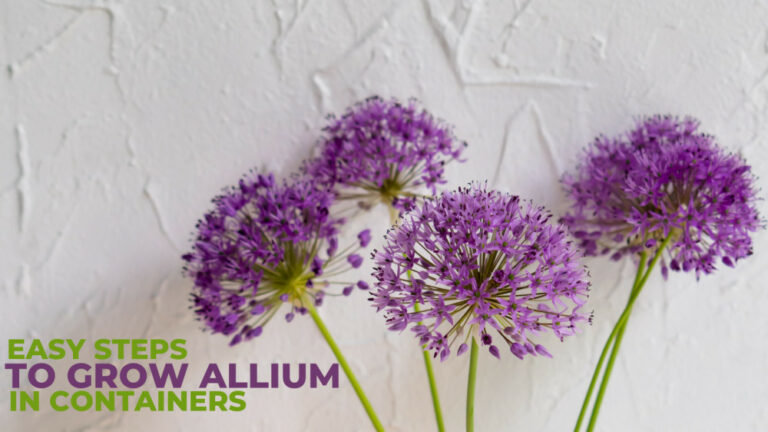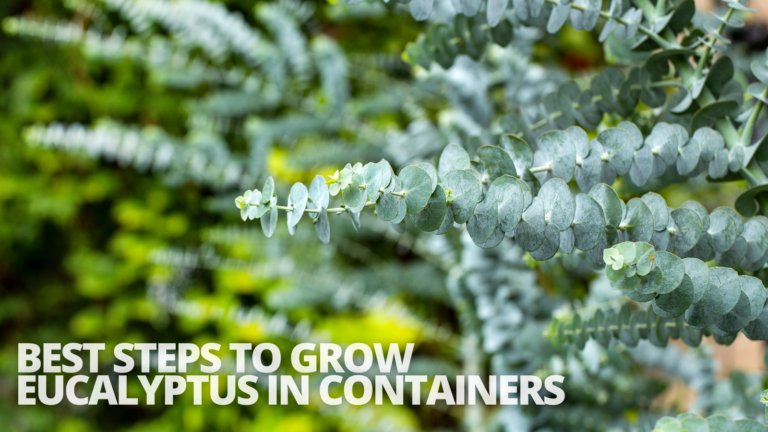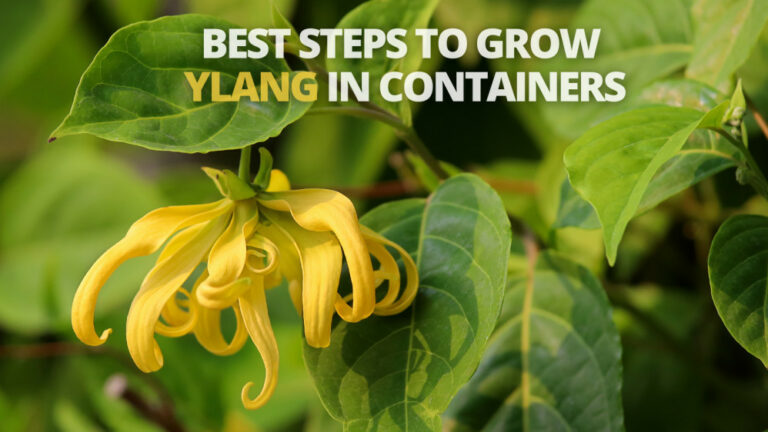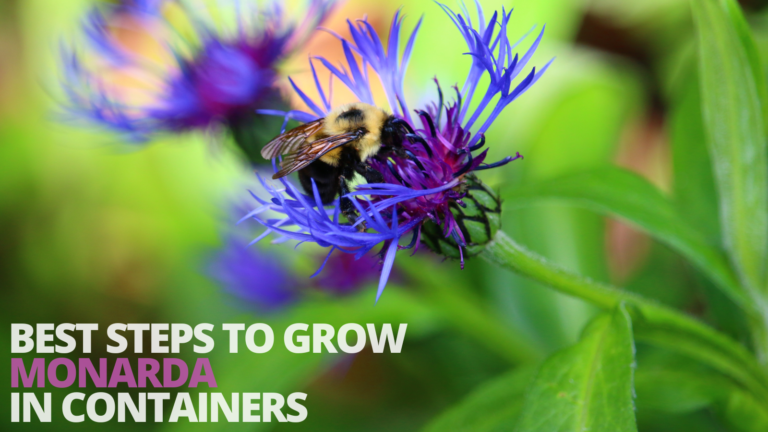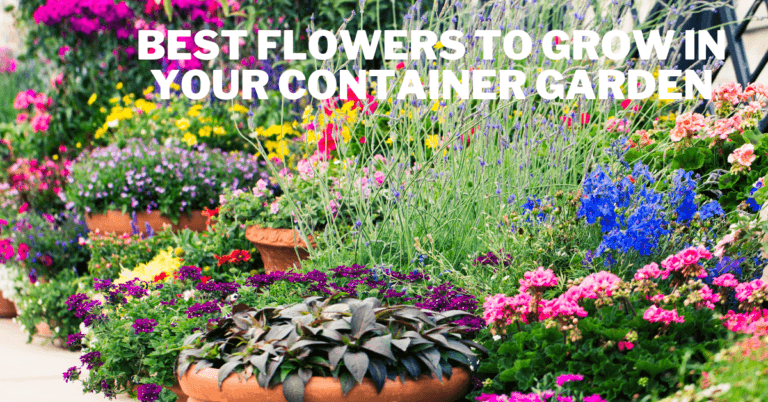Types Of Orchid Plants
A Comprehensive Guide To The Types Of Orchid Plants
Orchids are among the most diverse and enchanting flowering plants. Their unique forms and vibrant colours capture gardeners and nature enthusiasts. There are over 25,000 species and innumerable hybrids, and orchids can grow in various environments.
This guide delves into the types of orchid plants, highlighting their diverse characteristics, care requirements, and appeal to novice and experienced growers.
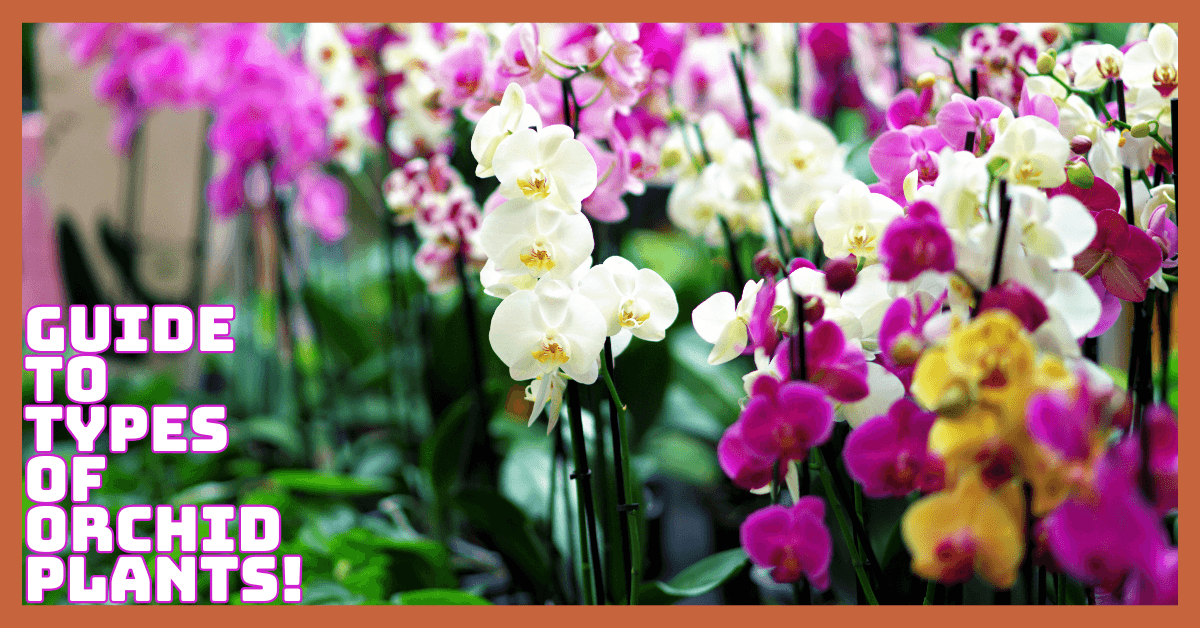
Characteristics Of Orchids
Orchids are renowned for their exotic beauty, intricate blooms, and incredible diversity. These adaptable plants feature unique flower structures, vibrant colours, and an ability to thrive in various climates, making them a favorite among plant enthusiasts worldwide.
1. Diverse Family
Orchids belong to Orchidaceae, one of the most prominent plant families with over 25,000 species and countless hybrids.
Their diversity in forms, sizes, and colours makes them adaptable to various environments and incredibly popular among gardeners worldwide.
2. Epiphytic Growth
Many orchids are epiphytes growing on trees or rocks without soil. They absorb water and nutrients from the air, rain, or organic debris, making them masters of survival in nutrient-poor or crowded environments like rainforests or rocky terrains.
3. Exotic Flowers
Orchids produce intricate, symmetrical flowers, often featuring a distinct lip (labellum) to attract specific pollinators. These blooms exhibit extraordinary shapes, patterns, and colours, showcasing nature’s creativity and evolution to ensure adequate pollination by insects, birds, or other animals.
4. Long-Lasting Blooms
Orchid flowers are prized for longevity, often weeks or months. Combined with their beauty, this feature makes orchids highly sought after for decorations, floral arrangements, and as a centrepiece in home or garden displays.
5. Specialized Pollination
Orchids have intricate relationships with pollinators, often mimicking scents or appearances of female insects to attract males.
These fascinating adaptations highlight orchids’ evolutionary ingenuity in ensuring their reproduction, making them one of nature’s most intelligent flowering plants.
6. Adaptability
Orchids thrive in diverse environments, from tropical rainforests and deserts to snowy mountains. Adapting to extreme conditions demonstrates their resilience, contributing to their global distribution and success as one of the most widespread plant families.
7. Aerial Roots
Many orchids develop aerial roots covered in velamen, a spongy tissue that absorbs moisture and nutrients from the air.
This adaptation enables orchids to grow in challenging environments, including high tree canopies and rocky surfaces, where traditional roots can’t reach.
8. Slow Growth
Orchids are slow growers, often taking years to mature and bloom. Their slow pace allows them to conserve resources and adapt to environmental changes, but it also demands patience from growers who cultivate them for their spectacular flowers.
9. Seed Production
Orchid seeds are microscopic and lack stored nutrients, requiring symbiosis with fungi (mycorrhiza) for germination. This dependency ensures they thrive in specific environments, contributing to their specialization and often making their cultivation a fascinating yet challenging process for enthusiasts.
10. Longevity
Orchids are long-lived plants, with many species capable of thriving for decades under proper care. This longevity adds to their value as houseplants or garden features, symbolizing resilience, beauty, and the rewards of attentive nurturing.
Types Of Orchid Plants
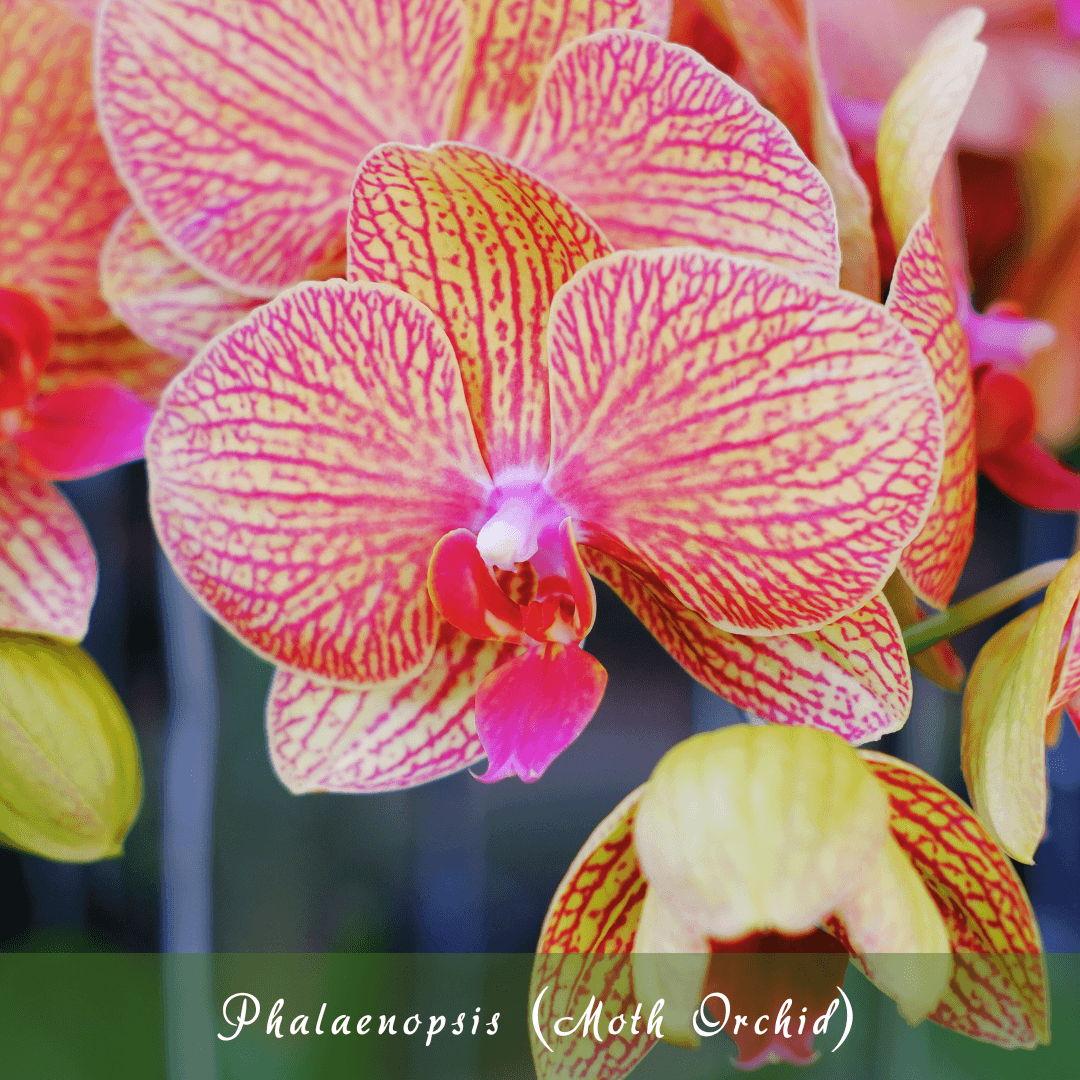
1. Phalaenopsis (Moth Orchid)
Phalaenopsis orchids, sometimes called “moth orchids,” are some of the most well-liked and approachable. They are indigenous to Southeast Asia and do well in warm, humid climates. Their flowers resemble moths in flight, hence the name.
Characteristics
These long-lasting flowers come in various colours, including white, pink, purple, and yellow. Their vibrant blooms add beauty and elegance to any indoor or outdoor setting.
Care Tips
They grow best in bright, indirect light and need consistent watering. The potting media must be allowed to dry between waterings.
Bloom Time
These flowers can bloom multiple times annually, with each bloom lasting up to three months. Their extended bloom period makes them a favorite among plant enthusiasts.
Growing Process
Support their roots with a bark-based potting mix. Water every 7-10 days, and fertilize monthly with a balanced orchid fertilizer for optimal growth and blooming.
Growing Zone
USDA zones 10-12.
2. Cattleya (Corsage Orchid)
Cattleya orchids are among the most popular plants. They are admired for their vibrant, fragrant blooms and timeless elegance. These showy plants are ideal for brightening spaces and adding a touch of sophistication.
Characteristics
Among the types of orchid plants, Cattleya orchids stand out with their large, colourful flowers and strikingly patterned lips, making them a captivating choice for enthusiasts. Their striking lips often display unique patterns or contrasting shades, adding to their breathtaking beauty and charm.
Care Tips
Cattleya orchids need bright, indirect light and excellent air circulation to thrive. Water thoroughly, but ensure roots dry out between waterings to prevent rot. Proper care ensures healthy growth and impressive blooms.
Bloom Time
Cattleyas typically bloom once annually, with their captivating flowers lasting around a month. Their seasonal display adds an exquisite touch to any collection, making them a favorite among orchid enthusiasts.
Growing Process
Plant Cattleyas in coarse potting media, such as bark or charcoal, for adequate drainage. Provide bright light and fertilize every two weeks during active growth for optimal health and stunning floral displays.
Growing Zone
USDA zones 9-12.
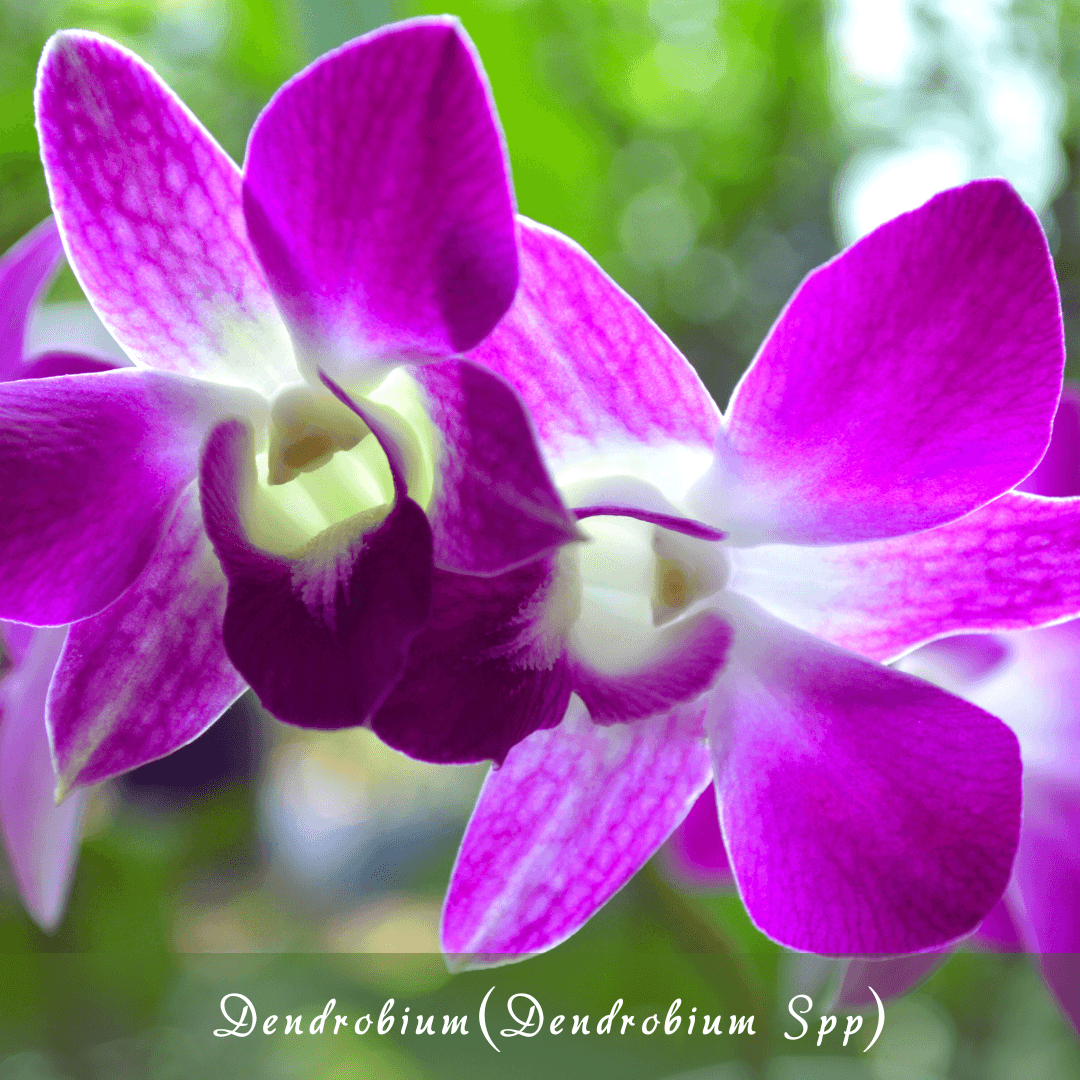
3. Dendrobium (Dendrobium spp.)
Dendrobium orchids, with over 1,800 species, are a diverse and adaptable genus. Native to Asia and the Pacific, they thrive in varied climates and captivate with their colourful, intricate blooms.
Characteristics
Dendrobiums are versatile orchid plants, ranging from compact to large. They have vibrant flowers and can adapt as deciduous or evergreen species.
Some species are deciduous, shedding leaves seasonally, while others retain foliage year-round, showcasing their adaptability to different environments.
Care Tips
These orchids thrive in bright light and require watering tailored to their growth cycle. Reduce watering during dormancy. Cooler night temperatures promote healthy growth and blooming, mimicking their natural habitat conditions.
Bloom Time
The bloom time varies by species, but many Dendrobiums flower in winter or spring. Their seasonal blooms bring vibrant colour and charm during months when other plants may be dormant.
Growing Process
Plant Dendrobiums in a well-draining medium, such as bark. Water every 5-7 days during the growth phase, reducing the frequency during dormancy. Proper care ensures robust plants and stunning floral displays.
Growing Zone
USDA zones 9-12.
4. Oncidium (Dancing Lady Orchid)
Oncidium orchids, often called “dancing lady orchids,” are celebrated for their whimsical, fluttering blooms that resemble dancing figures. These charming orchids bring a touch of elegance and playfulness to any space.
Characteristics
Oncidiums are stunning orchid plants known for their vibrant yellow flowers with contrasting brown or red markings. These flowers bloom gracefully on long, arching spikes. They bloom on long, arching spikes, adding a graceful dimension to their enchanting appearance.
Care Tips
Provide Oncidium orchids with bright, filtered light to encourage healthy growth and blooming. Use a well-draining potting medium and avoid overwatering, as they prefer their roots to dry out between waterings.
Bloom Time
Oncidiums usually bloom once a year and produce flowers that last several weeks. Their long-lasting, cheerful blossoms brighten any collection, making them a favorite among orchid enthusiasts.
Growing Process
Plant Oncidiums in medium-grade bark mix for proper drainage. Maintain high humidity and water only when the potting medium is dry. These conditions ensure robust growth and abundant blooms.
Growing Zone
USDA zones 9-12.
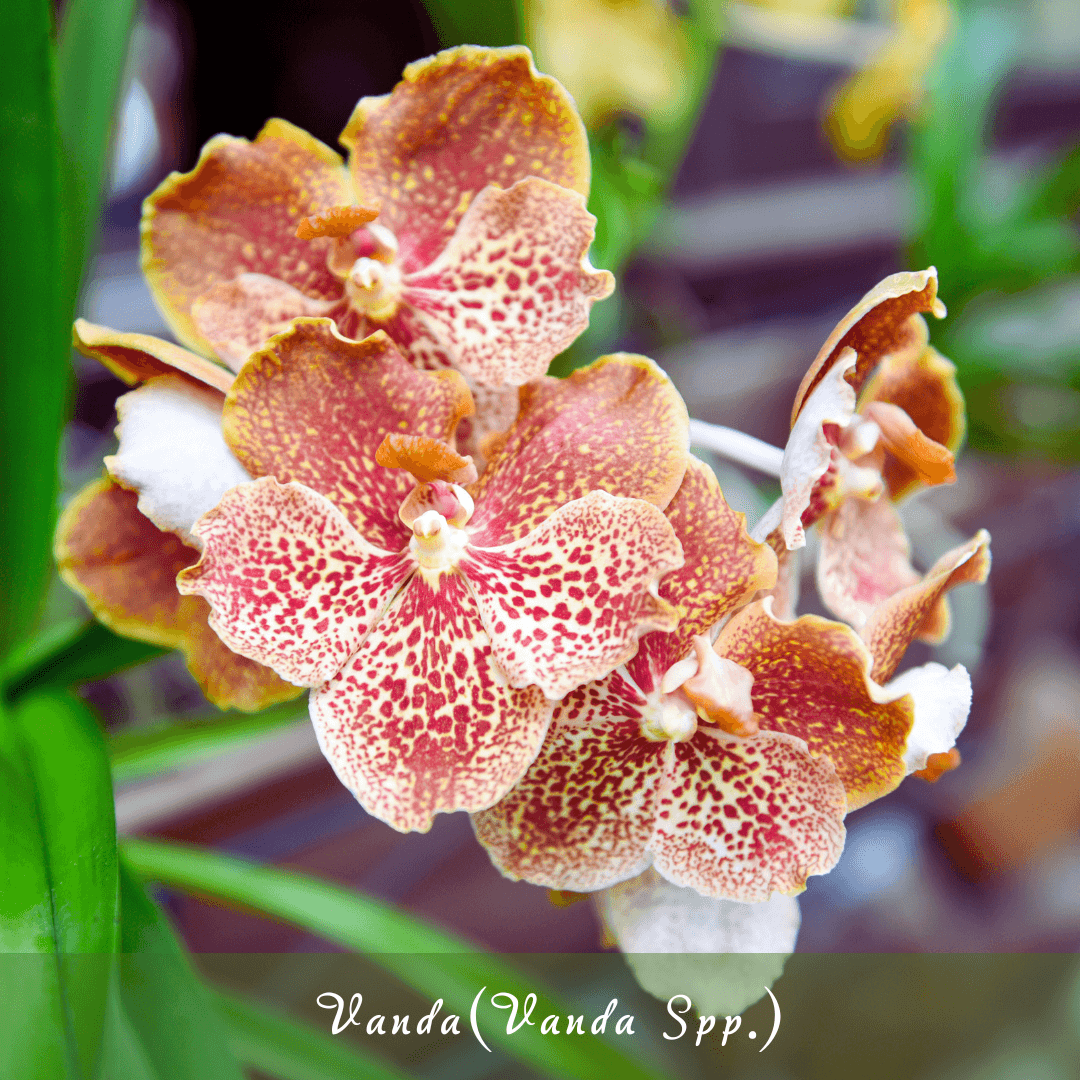
5. Vanda (Vanda spp.)
Vanda orchids are renowned for their spectacular, showy blooms and vivid colours, making them a favorite among seasoned orchid enthusiasts. Their bold presence adds a touch of tropical elegance to any collection.
Characteristics
Vandas are exceptional orchid plants celebrated for their large, waxy flowers in striking colours and elegant, strap-like leaves that exude beauty and sophistication. Paired with their long, strap-like leaves, these orchids make an unforgettable statement of beauty and sophistication.
Care Tips
Vandas thrive in bright light, high humidity, and good air circulation. Often grown in baskets or mounted on wood, they require open conditions to accommodate their large, sprawling roots.
Bloom Time
Unlike many orchids, Vandas can bloom multiple times annually. Their vibrant, long-lasting flowers remain for several weeks, making them a rewarding choice for dedicated growers.
Growing Process
Grow Vandas in baskets without a medium or coarse bark for optimal airflow. Mist roots daily to prevent drying out, and fertilize weekly to support vigorous growth and frequent blooming.
Growing Zone
USDA zones 10-11.
6. Paphiopedilum (Lady’s Slipper Orchid)
Paphiopedilum orchids, or “lady's slipper orchids,” are admired for their distinctive pouch-like blooms. Their unique appearance and earthy tones make them a captivating addition to any orchid collection.
Characteristics
Paphiopedilums are unique orchid plants distinguished by their slipper-shaped flowers in sophisticated shades of green, brown, and maroon, making them a favourite among novice and seasoned growers.
Their intriguing form and muted hues evoke a sense of natural sophistication, appealing to beginners and experienced orchid growers.
Care Tips
These orchids prefer low to medium light and moderate temperatures. They must maintain consistent conditions for healthy growth and beautiful blooms to support their delicate roots.
Bloom Time
Paphiopedilum flowers are exceptionally long-lasting, often remaining vibrant for several months. This extended bloom period allows enthusiasts to enjoy their unique beauty for an impressive amount of time.
Growing Process
Plant Paphiopedilum orchids in a mix of bark and perlite for excellent drainage. Water frequently to keep the medium moist but avoid waterlogging, as excess water can harm their sensitive root system.
Growing Zone
USDA zones 10-12.
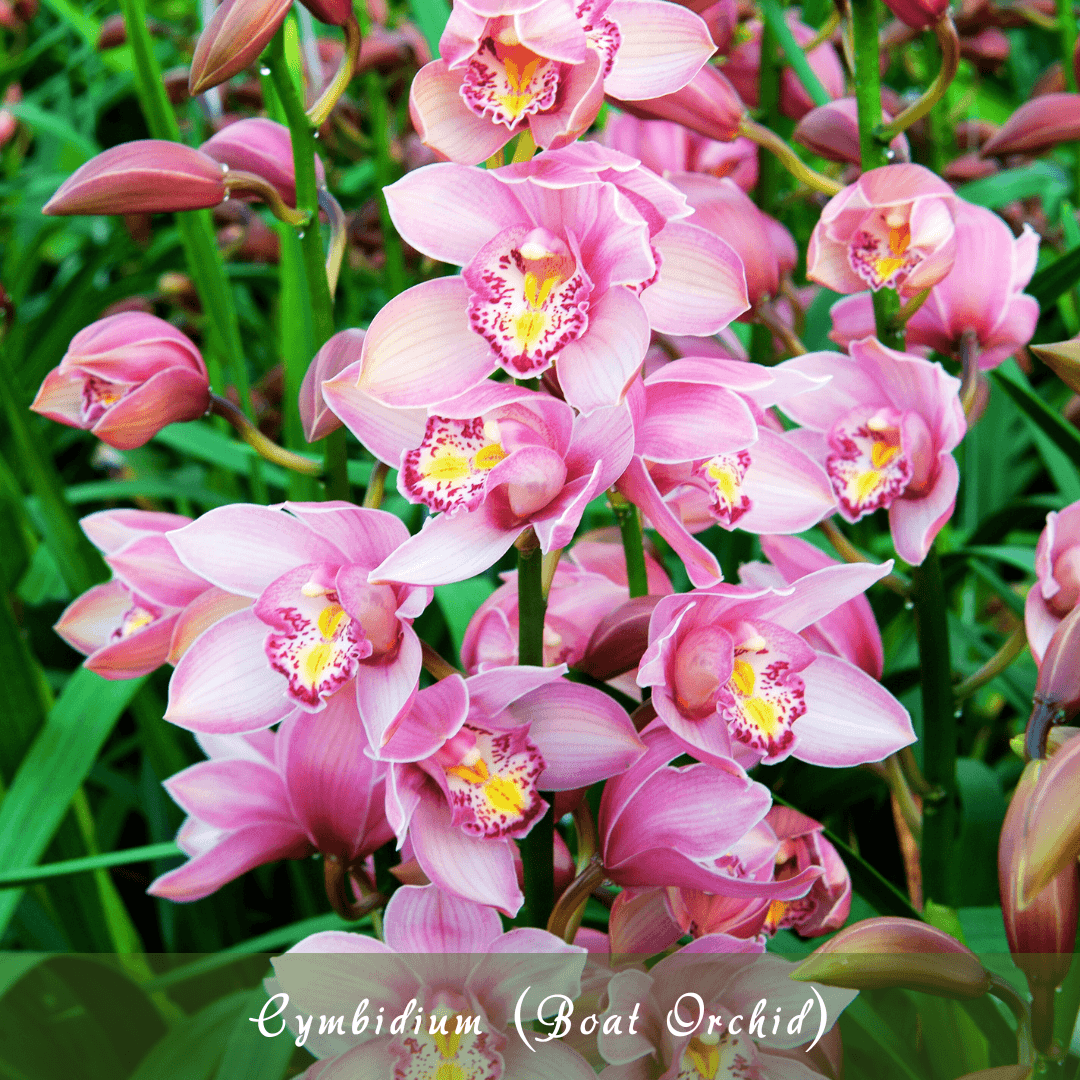
7. Cymbidium (Boat Orchid)
Cymbidium orchids, or “boat orchids,” are treasured for their long-lasting, graceful blooms. Native to Asia and Australia, these stunning plants bring elegance and colour to homes and gardens year-round.
Characteristics
Cymbidium orchids produce large sprays of flowers in diverse hues, from pastel tones to bold shades. Their long, strap-like leaves provide a lush, verdant backdrop, enhancing the plant's overall visual appeal.
Care Tips
These orchids like colder evening temperatures and do best in bright, indirect light. Regular watering prevents dehydration, supports the plant's robust growth, and ensures stunning blooms.
Bloom Time
Cymbidium orchids typically bloom during winter and early spring, brightening colder months. Their flowers can last up to three months, offering a prolonged period of beauty and enjoyment.
Growing Process
Plant Cymbidiums in a mix of bark and sphagnum moss for optimal moisture retention and drainage. Water regularly and fertilize every two weeks to promote vigorous growth and vibrant, long-lasting flowers.
Growing Zone
USDA zones 7-10.
8. Miltoniopsis (Pansy Orchid)
Miltoniopsis orchids, often called “pansy orchids,” captivate with their flat, fragrant blooms reminiscent of pansies. Their delicate beauty and sweet scent make them a favorite among orchid enthusiasts.
Characteristics
Miltoniopsis orchids are delicate plants known for their pastel-hued flowers with intricate patterns, bringing a serene and artistic elegance to any collection. Their charming, flat blooms add a calm and creative touch to any collection.
Care Tips
These orchids need steady moisture and cool to moderate temperatures. They should be kept in bright, indirect light, as direct sunlight can scorch their delicate leaves and blooms.
Bloom Time
Miltoniopsis orchids typically bloom twice a year, in spring and fall. Their biannual flowering provides a recurring display of beauty and fragrance, making them a rewarding addition to any orchid collection.
Growing Zone
USDA zones 9-11.
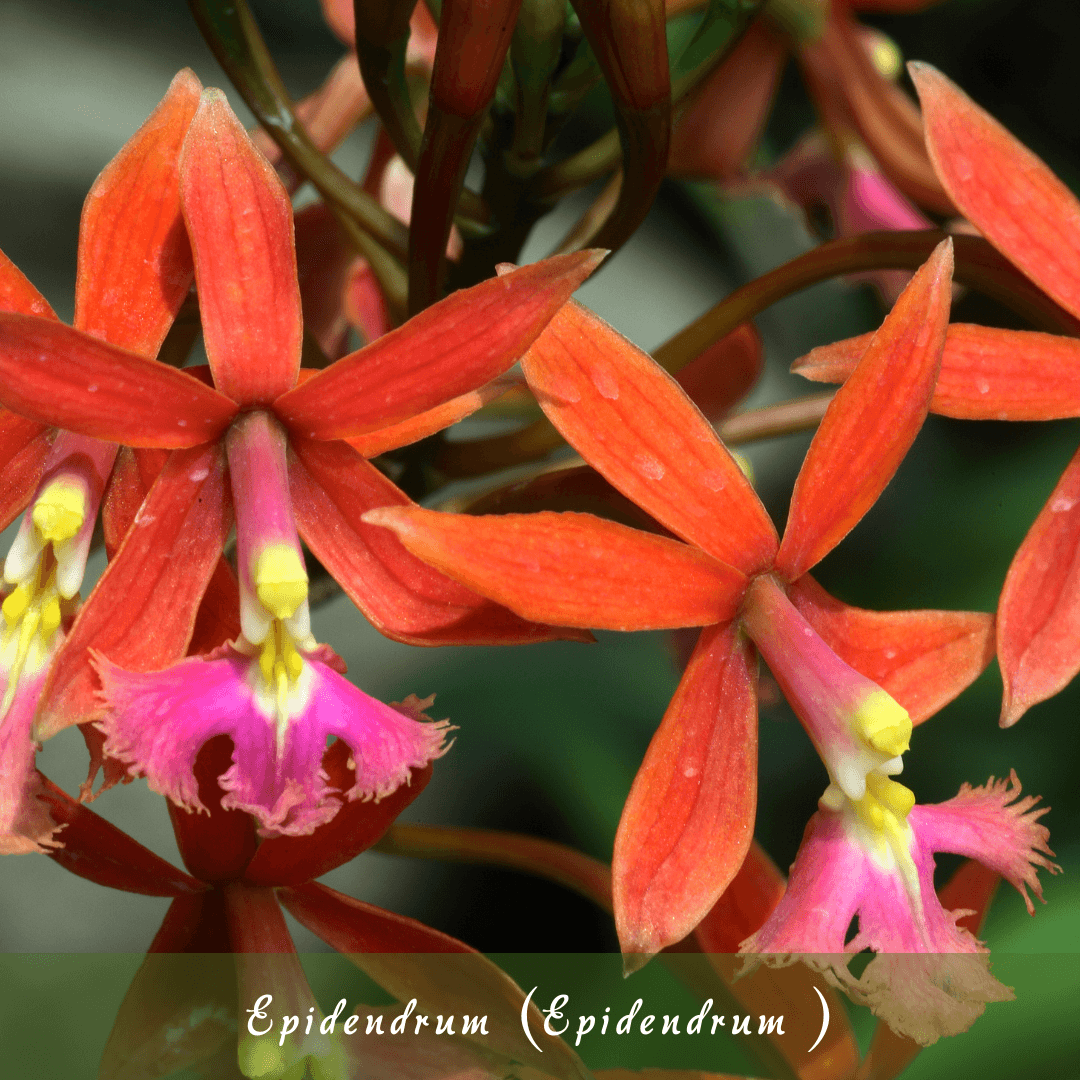
9. Epidendrum (Epi)
Epidendrum orchids are a large and diverse genus with over 1,000 species. Known for their vibrant clusters of small, star-shaped flowers, they are commonly grown in tropical climates and as epiphytes.
Characteristics
Epidendrum flowers are small and star-shaped, often appearing in vibrant clusters. Their colour palette spans from subtle greens and whites to bold oranges and reds, offering a cheerful, colourful display throughout their blooming period.
Care Tips
Epidendrums thrive in bright light and warm temperatures, mimicking their tropical habitat. Frequent watering is essential, but proper drainage is also necessary to prevent waterlogged roots, which can lead to rot or fungal issues.
Bloom Time
Under optimal conditions, Epidendrum orchids can bloom year-round, providing continuous beauty and colour. This remarkable ability makes them advantageous for growers seeking consistent floral displays.
Growing Process
Plant Epidendrums in a bark-based medium for adequate drainage. Regular fertilization encourages healthy growth and blooming, while ample sunlight ensures the plant remains strong and vibrant, supporting its year-round blooming potential.
Growing Zone
USDA zones 9-12.
10. Bulbophyllum (Bulbophyllum)
Bulbophyllum orchids are the largest genus in the Orchidaceae family, with over 2,000 species. They are known for their unusual and sometimes bizarre flowers.
Characteristics
These distinctive orchid plants are known for their unique, often pungently scented flowers, which come in various intriguing shapes and sizes, captivating pollinators and enthusiasts.
Their blooms come in different shapes and sizes, offering intriguing forms that attract pollinators and orchid lovers alike.
Care Tips
These orchid plants thrive in high humidity and low light. To achieve health, they require a consistently moist environment. Keep the potting medium moist to ensure their health and avoid drying out.
Bloom Time
The bloom time of these orchids varies by species, with some flowering seasonally and others blooming sporadically. Their fragrant and unusual flowers bring joy whenever they do appear, often making each bloom a special occasion.
Growing Process
Grow these orchids in a sphagnum moss mix for better moisture retention. High humidity is necessary for good growth, so use humidity trays or mist often. Water frequently to keep the medium moist and prevent it from drying out.
Growing Zone
USDA zones 10-12.
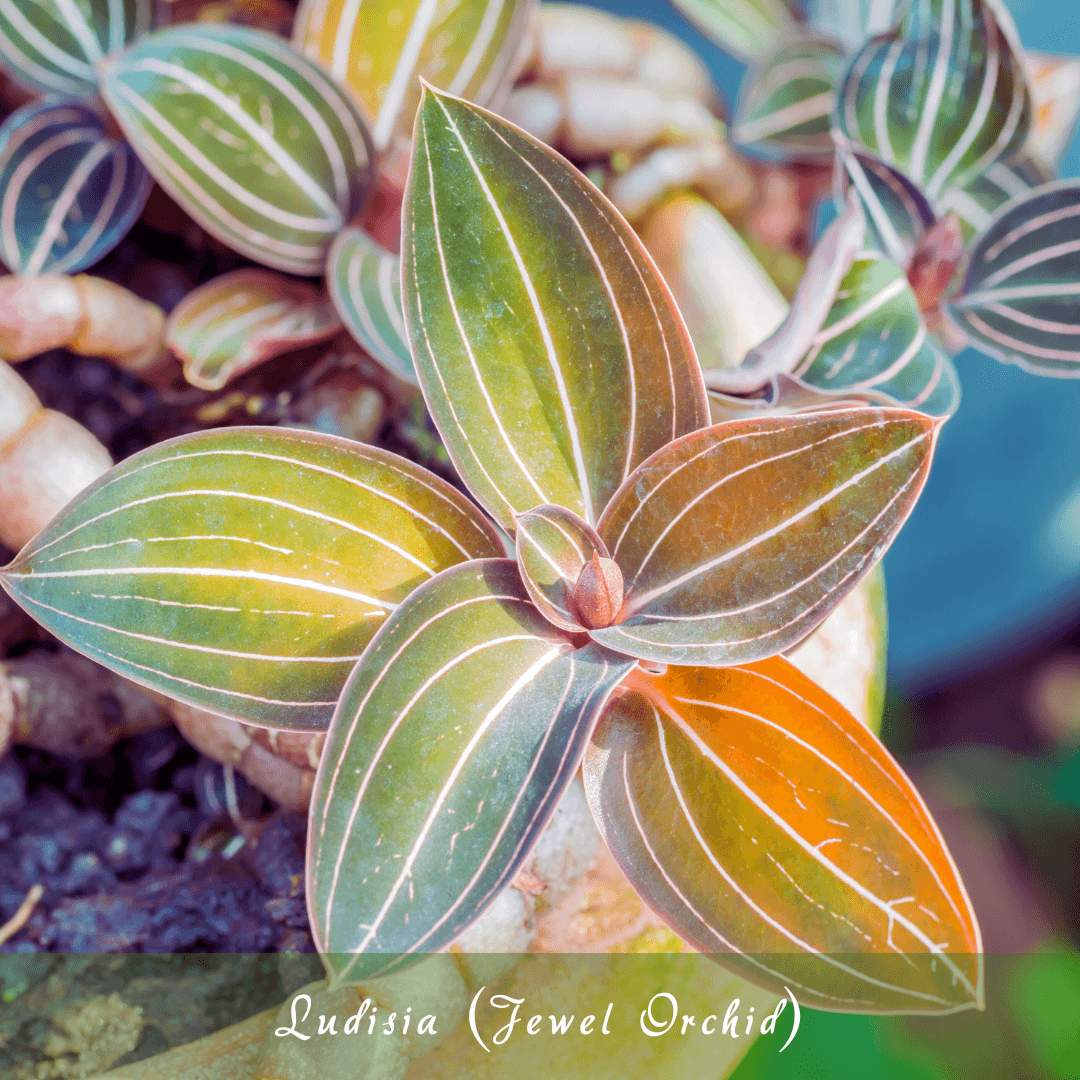
11. Ludisia (Jewel Orchid)
Ludisia orchids, known as “jewel orchids,” are prized for their striking foliage rather than flowers. Adornedatterns and their velvety leaves make them stand out in any orchid collection.
Characteristics
Ludisia orchids are remarkable orchid plants, admired for their velvety, dark green leaves with striking vein patterns, making them a favourite among foliage enthusiasts. Although their flowers are small and white, the foliage captivates orchid enthusiasts.
Care Tips
These orchids thrive in low light and high humidity conditions that mimic their natural habitat. Keep the soil consistently moist;; they prefer a humid, shaded environment to maintain healthy growth and vibrant foliage.
Bloom Time
Ludisia orchids typically bloom in late winter, producing small, white flowers on spikes. Though their blooms are less showy than their foliage, they contrast the rich, colourful leaves.
Growing Process
Ludisia orchids are unique plants that require a peat-based mix for optimal moisture retention and drainage. They thrive in low light and showcase their stunning foliage.
Maintaining consistent moisture levels and providing low light ensures the plant flourishes and showcases its distinctive and beautiful foliage.
Growing Zone
USDA zones 10-11.
FAQ
1. What Is The Most Beautiful Orchid In The World?
The Cattleya orchid is often considered the most beautiful due to its vibrant, large blooms.
2. Why Are My Orchids' Leaves Turning Yellow?
Yellow leaves may indicate overwatering, underwatering, poor light, or pests.
3. Can Orchids Grow In Winter?
Yes, many orchids like Cymbidium bloom in winter with proper care.
4. Can Orchids Grow In Office Light?
Orchids like Phalaenopsis can thrive in bright, indirect office light.
Conclusion
In conclusion, the world of orchids is diverse and captivating, offering various unique characteristics. Every type of orchid, from the colourful Cattleya to the aromatic Zygopetalum, has its beauty and, with the proper care, can flourish in various settings.
Whether you're a seasoned grower or a novice enthusiast, there’s an orchid for everyone. With careful care, these plants can bring beauty and elegance to any home or garden.
I trust you enjoyed this article on A Comprehensive Guide To The Types Of Orchid Plants. Please stay tuned for more blog posts soon. Take care!
JeannetteZ
>>>Please click here to read my all-inclusive article, About The Essential Companion Planting Guide<<<
>>>Please click here to read my all-inclusive article about Container Gardening<<<
>>>Are you interested in homegrown herbs and medicine? Please click here to find out more about it!<<<
Your Opinion Is Important To Me
Do you have thoughts, ideas, or questions? I would love to hear from you. Please leave me your questions, experiences, and remarks about this article, A Comprehensive Guide To The Types Of Orchid Plants, in the comments section below. You can also email me at Jeannette@Close-To-Nature.org.
Disclosure
This post may contain affiliate links. As an Amazon Associate and other affiliate programs, I earn from qualifying purchases at no extra cost to you. Please read my full affiliate disclosure.
You might also enjoy these blog posts:
A Guide To The Various Types Of Bromeliad Plants
Stunning Types Of Dahlia Plants You’ll Love
How To Stop Anxiety Attacks Fast
Brilliant Cactus Gardening Ideas To Elevate Your Space
How To Grow Dahlia Plants For Stunning Blooms
Bromeliad Plant Care: From Vibrant Blooms To Propagating Pups


